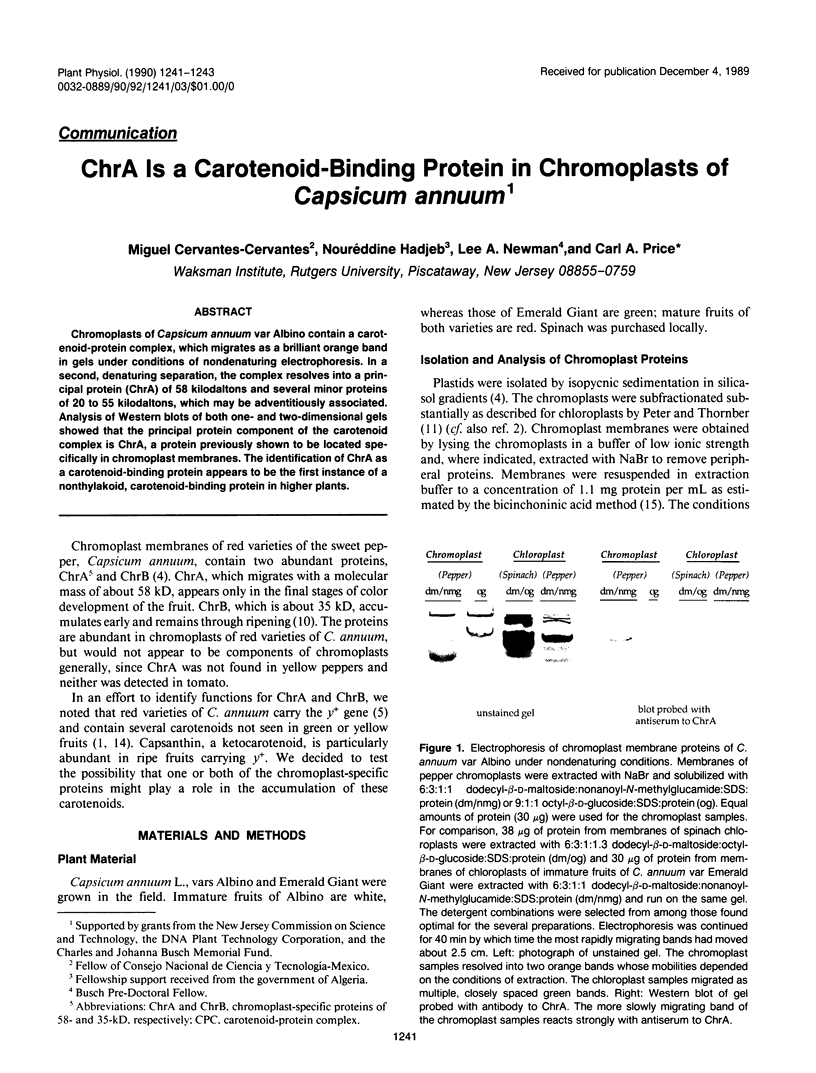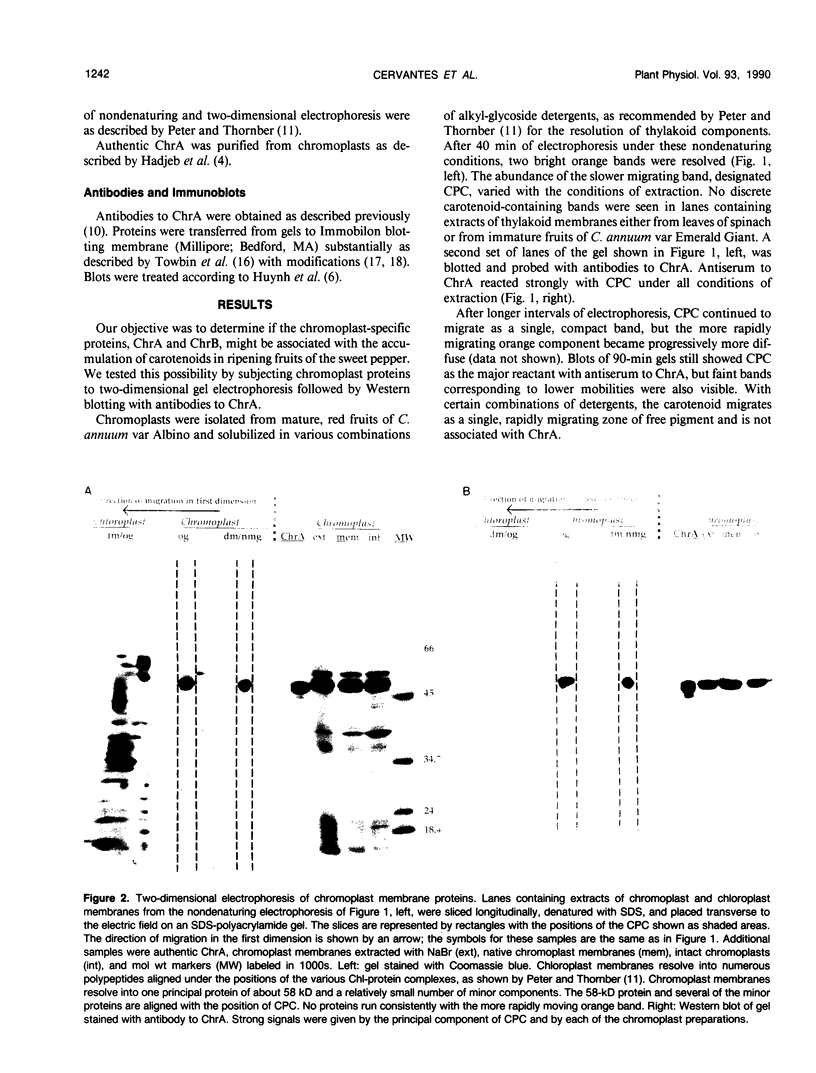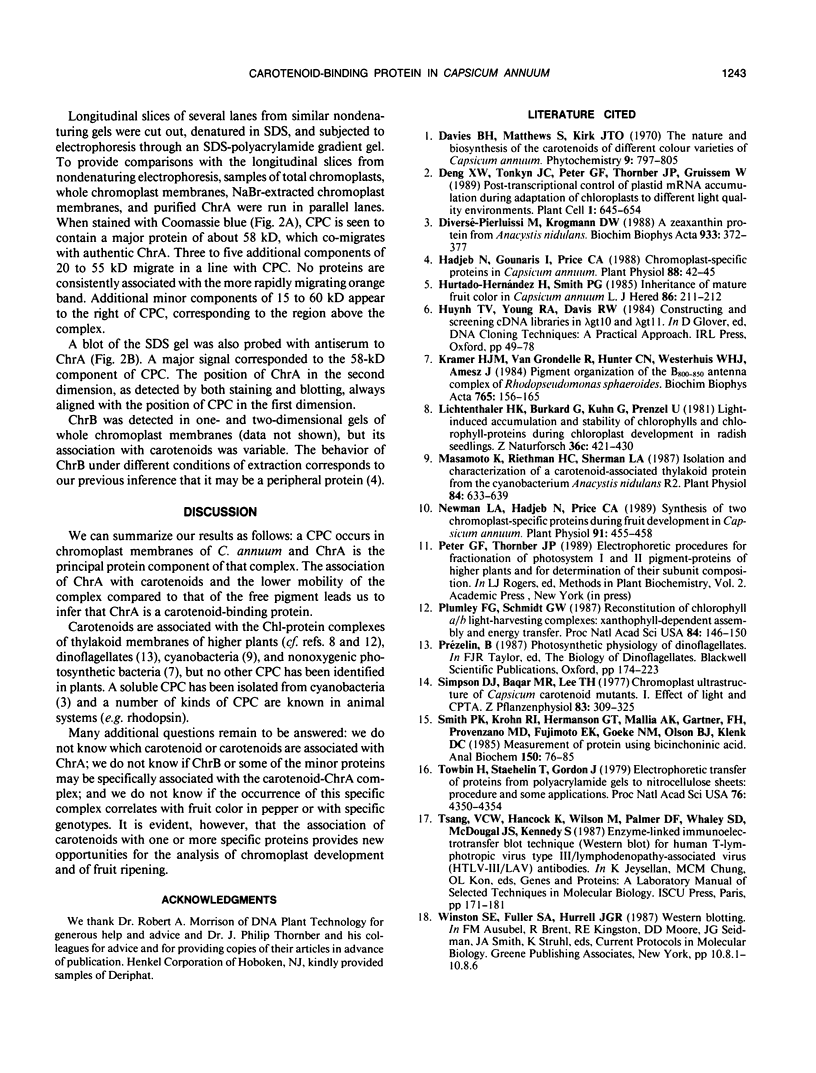Abstract
Chromoplasts of Capsicum annuum var Albino contain a carotenoid-protein complex, which migrates as a brilliant orange band in gels under conditions of nondenaturing electrophoresis. In a second, denaturing separation, the complex resolves into a principal protein (ChrA) of 58 kilodaltons and several minor proteins of 20 to 55 kilodaltons, which may be adventitiously associated. Analysis of Western blots of both one- and two-dimensional gels showed that the principal protein component of the carotenoid complex is ChrA, a protein previously shown to be located specifically in chromoplast membranes. The identification of ChrA as a carotenoid-binding protein appears to be the first instance of a nonthylakoid, carotenoid-binding protein in higher plants.
Full text
PDF


Images in this article
Selected References
These references are in PubMed. This may not be the complete list of references from this article.
- Deng X. W., Tonkyn J. C., Peter G. F., Thornber J. P., Gruissem W. Post-transcriptional control of plastid mRNA accumulation during adaptation of chloroplasts to different light quality environments. Plant Cell. 1989 Jun;1(6):645–654. doi: 10.1105/tpc.1.6.645. [DOI] [PMC free article] [PubMed] [Google Scholar]
- Hadjeb N., Gounaris I., Price C. A. Chromoplast-Specific Proteins in Capsicum annuum. Plant Physiol. 1988 Sep;88(1):42–45. doi: 10.1104/pp.88.1.42. [DOI] [PMC free article] [PubMed] [Google Scholar]
- Masamoto K., Riethman H. C., Sherman L. A. Isolation and Characterization of a Carotenoid-Associated Thylakoid Protein from the Cyanobacterium Anacystis nidulans R2. Plant Physiol. 1987 Jul;84(3):633–639. doi: 10.1104/pp.84.3.633. [DOI] [PMC free article] [PubMed] [Google Scholar]
- Newman L. A., Hadjeb N., Price C. A. Synthesis of Two Chromoplast-Specific Proteins During Fruit Development in Capsicum annuum. Plant Physiol. 1989 Oct;91(2):455–458. doi: 10.1104/pp.91.2.455. [DOI] [PMC free article] [PubMed] [Google Scholar]
- Plumley F. G., Schmidt G. W. Reconstitution of chlorophyll a/b light-harvesting complexes: Xanthophyll-dependent assembly and energy transfer. Proc Natl Acad Sci U S A. 1987 Jan;84(1):146–150. doi: 10.1073/pnas.84.1.146. [DOI] [PMC free article] [PubMed] [Google Scholar]
- Smith P. K., Krohn R. I., Hermanson G. T., Mallia A. K., Gartner F. H., Provenzano M. D., Fujimoto E. K., Goeke N. M., Olson B. J., Klenk D. C. Measurement of protein using bicinchoninic acid. Anal Biochem. 1985 Oct;150(1):76–85. doi: 10.1016/0003-2697(85)90442-7. [DOI] [PubMed] [Google Scholar]
- Towbin H., Staehelin T., Gordon J. Electrophoretic transfer of proteins from polyacrylamide gels to nitrocellulose sheets: procedure and some applications. Proc Natl Acad Sci U S A. 1979 Sep;76(9):4350–4354. doi: 10.1073/pnas.76.9.4350. [DOI] [PMC free article] [PubMed] [Google Scholar]




